Key Takeaways:
- Vieques, Puerto Rico, is home to a fascinating population of wild horses, integral to the island’s culture and ecosystem.
- These horses roam freely across the island, offering unique wildlife viewing opportunities for visitors.
- Conservation efforts are crucial to maintaining the balance between human activities and the natural habitat of these animals.
Vieques Island, off the eastern coast of Puerto Rico, is not only celebrated for its bioluminescent bays and pristine beaches but also for its intriguing population of wild horses. These animals, roaming freely across the island’s lush landscapes and sandy shores, are not just a charming sight. They are deeply woven into the fabric of Vieques’ history and daily life.
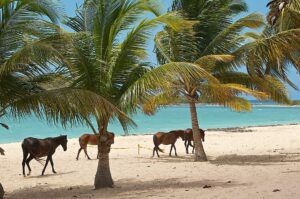
A Historical Gallop
The story of Vieques’ wild horses is as old as the island’s human history. Believed to have been introduced by European colonizers in the 16th century, these horses quickly became feral, adapting to the island’s environment. Over centuries, they’ve survived without human management, thriving in the wild and becoming an integral part of the local ecosystem.
Today, these horses are often seen grazing in the fields or even wandering through the towns. Their presence is so iconic that they have become a symbol of Vieques itself, embodying the free-spirited nature of the island. Locals have a deep respect for these creatures, often referring to them as “Los Caballos de Vieques.”
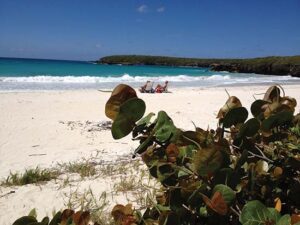
The Socio-Economic Impact of Vieques’ Equine Residents
The wild horses of Vieques, Puerto Rico, are not just picturesque subjects for photographers. They play a significant role in the local economy. Imagine walking through the streets of Vieques and stumbling upon a group of wild horses — this unique sight attracts thousands of tourists each year, boosting local businesses and hospitality services. From guided tours on horseback to horse-themed souvenirs, these majestic creatures help keep the economic wheels turning in this small island community.
The presence of these horses also influences local employment. Many residents find work as tour guides, caretakers, or in roles supporting the eco-tourism sector that revolves around the natural allure of Vieques. This symbiotic relationship between the horses and the people of Vieques highlights a vital aspect of the island’s socio-economic fabric. As tourism flourishes, so does the opportunity for local inhabitants to sustain their families, preserving traditional lifestyles that have developed around the horses and their lore.
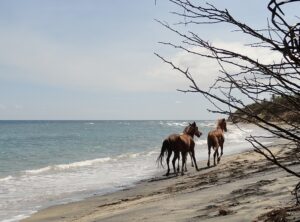
The Cultural Tapestry Woven by Vieques’ Horses
In Vieques, Puerto Rico, horses are more than just animals. They are woven into the cultural tapestry of the island. For generations, these horses have been part of local folklore and traditions, often featured in stories and festivals. They represent a living connection to a past where horses were essential for transportation and agriculture, long before the modern conveniences took over.
The cultural impact of these horses can also be seen in the arts. Local artists often depict the wild horses in their paintings, sculptures, and crafts, showcasing their significance not only as a tourist attraction but as an emblem of Vieques’ heritage. This artistic representation helps promote a deeper appreciation and respect for these animals, encouraging both locals and visitors to support efforts in preserving their free-roaming lifestyle. Through art and story, the horses of Vieques gallop through the very spirit of the community.
Ecological Hoofprints
The ecological impact of the wild horses on Vieques is profound. They help maintain the landscape by controlling vegetation and their trails aid in the dispersal of seeds, promoting biodiversity. However, their freedom comes with challenges. The balance between their need for space and the island’s development is delicate.
Efforts to manage the horse population responsibly have been implemented to ensure that their freedom does not harm their habitat or the island’s other native species. Organizations like the Vieques Conservation and Historical Trust work tirelessly to educate the public and protect the island’s natural resources, including its equine residents.
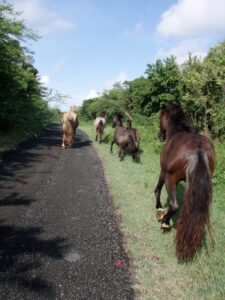
Tourist Attractions on Hooves
For tourists, the sight of wild horses adds a magical element to the Vieques experience. Many visitors look forward to encountering these majestic animals during their explorations, whether they’re hiking, on a secluded beach, or near the historical sites. Photography enthusiasts and nature lovers particularly treasure these moments.
Local tour guides offer horse-watching tours, combining them with stories of the island’s history and insights into the horses’ behavior and their role in the local ecosystem. This not only enhances the visitor experience but also raises awareness about the importance of preserving these animals and their natural environment.
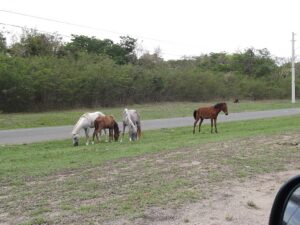
Summary:
The wild horses of Vieques, Puerto Rico, are not just a beautiful sight, they are a vital part of the island’s culture and ecosystem. Their historical roots run deep, and their ecological impact is significant. As both a tourist attraction and a conservation priority, these horses capture the essence of Vieques, embodying its wild beauty and the community’s commitment to preserving nature. By understanding and respecting these majestic creatures, we can ensure they remain an integral part of the island’s identity for generations to come.
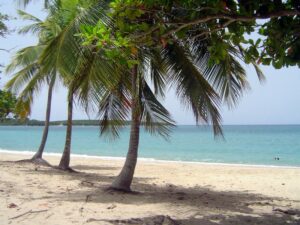
FAQ Section:
- How many wild horses are there in Vieques?
- The population of wild horses in Vieques fluctuates, but estimates suggest there are several hundred horses roaming the island.
- Can tourists interact with the wild horses?
- While tourists can observe the wild horses, it is important to maintain a respectful distance to avoid distressing the animals and to ensure both human and horse safety.
- What efforts are being made to conserve the wild horses of Vieques?
- Conservation efforts include population management, habitat preservation, and public education programs aimed at promoting coexistence and protecting the island’s natural resources.
- How can I learn more and help?
- Please visit https://saveourwildhorses.net/puerto-rico-wild-horses.html to stay up-to-date.
Creative Commons Attributions:
Susan Morse/USFWS, Public domain, via Wikimedia Commons
Jaro Nemčok, CC BY-SA 3.0, via Wikimedia Commons
Jay Sturner from USA, CC BY 2.0, via Wikimedia Commons
Edgar Torres, CC BY 3.0, via Wikimedia Commons
Edgar Torres, CC BY 3.0, via Wikimedia Commons
Rar285, CC BY-SA 3.0, via Wikimedia Commons
https://www.flickr.com/people/jasonsager/, CC BY-SA 2.0, via Wikimedia Commons
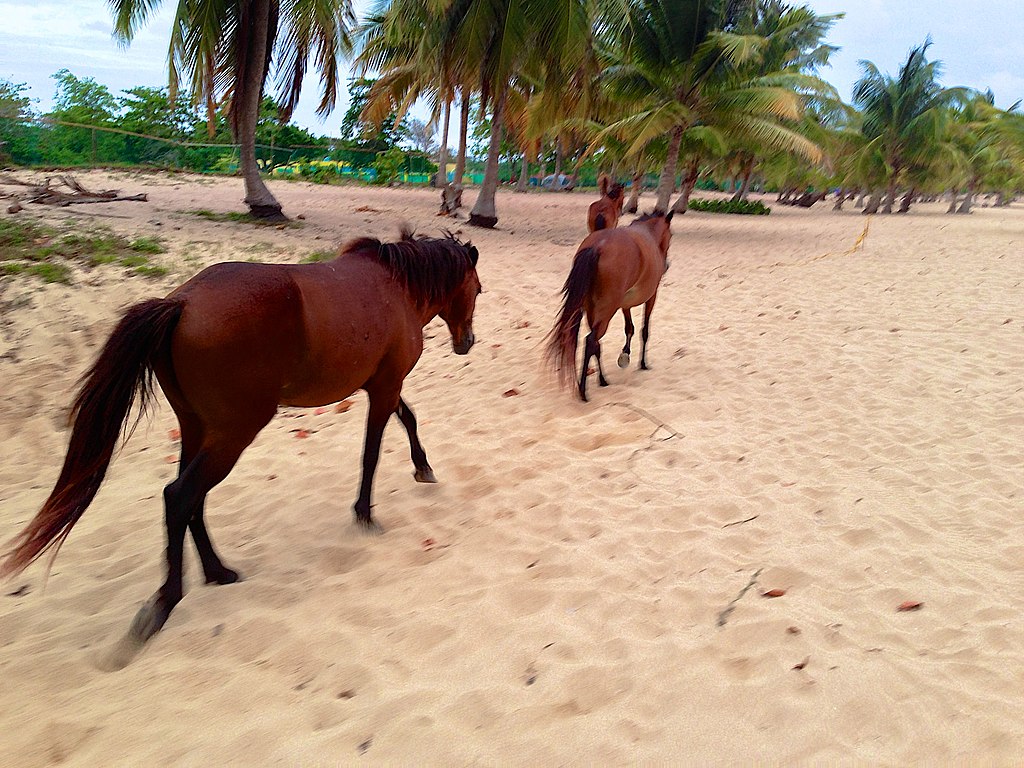
Leave a Reply